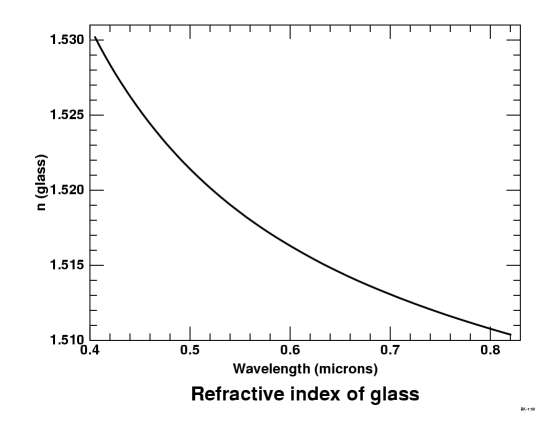
Refraction is slightly different for different colors of light. This variation of the refractive index with the wavelength or frequency of the light is called dispersion. Dispersion is a property of all transparent materials.
The color of green flashes is due to the dispersion of air, which makes atmospheric refraction slightly different for different parts of the spectrum. The dispersion of air, like that of water, glass, clear plastics, and most other materials, is small: the refractivity (n - 1) varies by about 1% across the visible spectrum.
Because dispersion is so small, it is negligible for many purposes. Only in special situations is the dispersion of air visible to the naked eye.

Here is the dispersion curve of air at standard conditions:
The values plotted are taken from the formula of
E. R. Peck and K. Reederadjusted to STP (i.e., 0°C).
Dispersion of air
JOSA 62, 958-962 (1972)
(See the page on refractivity of air for my reasons for using their formula.)

Similarly, here's the dispersion curve for a commonly used optical glass (Schott BK 7) similar to ordinary window glass.
Notice that, apart from the scaling, these dispersion curves are much alike.
[The dispersion curves of most transparent media are so similar that Isaac Newton thought achromatic lenses were impossible — one of Newton's biggest mistakes, though it led him to invent the reflecting telescope.]
There's also a figure showing the actual amount of dispersion at a prism made of this glass. It's small, compared to the deviation due to the mean refraction in the visible spectrum.
© 2002 – 2006, 2011, 2012, 2014 Andrew T. Young